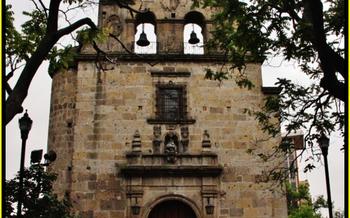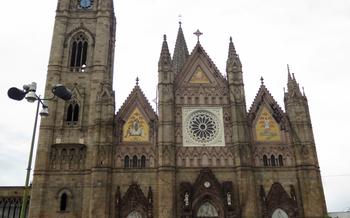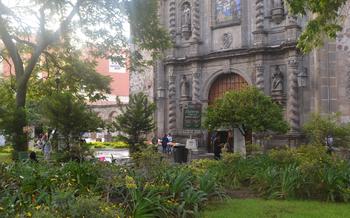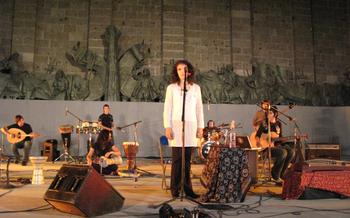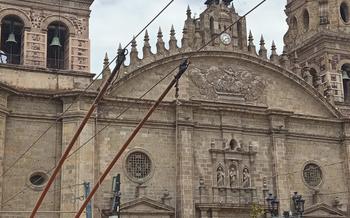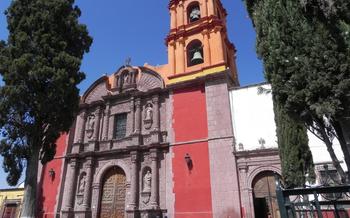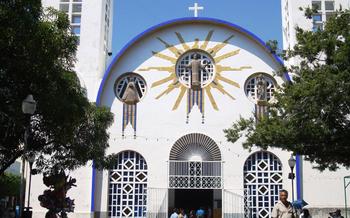
Guadalajara Cathedral
- Historical Significance:
- Location
- Exterior Beauty
- Interior Grandeur
- Religious Significance
- Historical Events
- Architectural Styles
- Stained Glass Windows
- Altarpiece and Artwork
- Pilgrimage Site
- Cultural Events
- Guided Tours
- Photography Opportunities
- Dress Code and Etiquette
Historical Significance:
Guadalajara Cathedral, a magnificent architectural masterpiece, stands as a testament to the city's rich history and profound religious devotion. Its foundations were laid in the 16th century, making it one of the oldest cathedrals in Mexico. Over the centuries, the cathedral has played a pivotal role in the religious and cultural development of Guadalajara, serving as a symbol of faith, unity, and artistic expression.
The cathedral's architectural style reflects a blend of Gothic, Neoclassical, and Baroque influences, showcasing the city's unique cultural heritage. Its construction spanned several centuries, with each era leaving its mark on the cathedral's design. The resulting architectural fusion creates a harmonious blend that distinguishes Guadalajara Cathedral from other religious structures in Mexico.
Location
The Guadalajara Cathedral is situated in the heart of the city, at Armas. The area surrounding the cathedral is a vibrant mix of colonial architecture, bustling plazas, and lively streets, offering a glimpse into the city's rich history and vibrant culture.
Visitors can conveniently access the cathedral by various means of transportation. Public transportation, including buses and the city's light rail system, offers convenient connections to the cathedral from different parts of the city. Alternatively, taxis and ride-sharing services are readily available for those who prefer private transportation. The cathedral's central location ensures that it is well-connected and accessible to visitors from all corners of Guadalajara.
Exterior Beauty
The Guadalajara Cathedral's exterior is a testament to the grandeur of Gothic architecture, showcasing a striking Gothic façade that commands attention. Its twin towers, reaching towards the heavens, are a symbol of the cathedral's religious significance and architectural prowess. The intricate details and elaborate sculptures adorning the exterior create a visual symphony, captivating visitors from afar. From the intricately carved gargoyles perched atop the buttresses to the delicate tracery of the rose windows, every element of the cathedral's exterior is a masterpiece of craftsmanship, inviting visitors to marvel at its beauty and immerse themselves in its rich history.
Interior Grandeur
Stepping inside the Guadalajara Cathedral is a truly awe-inspiring experience. The spacious nave, with its soaring vaulted ceilings, creates an atmosphere of grandeur and spirituality. Sunlight streams through the stunning stained glass windows, casting a kaleidoscope of colors onto the marble floors. The intricate details of the vaulted ceilings, with their intricate patterns and moldings, draw the eye upwards, creating a sense of wonder and reverence.
The cathedral's interior is adorned with majestic altarpieces, each a masterpiece of craftsmanship. The main altarpiece, located behind the altar, is a particularly impressive sight. It features a large central panel depicting the Assumption of the Virgin Mary, surrounded by intricately carved figures of saints and angels. The side altars are equally impressive, with their elaborate carvings and gilded details.
Throughout the cathedral, visitors can admire a wealth of religious artwork, including paintings, sculptures, and tapestries. These works of art depict scenes from the Bible, the lives of the saints, and the history of the Catholic Church. They serve to enhance the spiritual atmosphere of the cathedral and provide visitors with a deeper understanding of the Christian faith.
Religious Significance
The Guadalajara Cathedral holds immense religious significance as the seat of the Archdiocese of Guadalajara, one of the most important archdioceses in Mexico. It serves as the mother church for the entire region, overseeing numerous parishes and religious communities. The cathedral is a symbol of the Catholic faith in the city and plays a central role in the religious and spiritual lives of its people.
Throughout the year, the cathedral hosts a variety of religious ceremonies, festivals, and processions that attract thousands of devout Catholics. These events showcase the rich traditions and customs of the local Catholic community. The cathedral's annual feast day, celebrated on October 12th, is particularly significant and draws a large number of pilgrims and visitors who come to pay homage to the Virgin of Zapopan, the patron saint of Guadalajara.
The cathedral has played a crucial role in shaping the city's religious identity and continues to be a place of worship, pilgrimage, and spiritual renewal for the people of Guadalajara.
Historical Events
Throughout its existence, the Guadalajara Cathedral has witnessed and played a pivotal role in numerous historical events that have shaped the city's identity. In 1541, when the city was founded, the cathedral was a modest chapel that served as the spiritual center of the newly established community. Over the centuries, it underwent several expansions and renovations, reflecting the city's growing importance and wealth.
In the 17th century, the cathedral became the seat of the newly created Archdiocese of Guadalajara, solidifying its status as the religious center of the region. This led to the construction of the impressive twin towers that dominate the cathedral's façade, symbolizing its authority and grandeur.
The cathedral has also been a witness to significant political and social events. During the Mexican War of Independence, it served as a refuge for both royalist and insurgent forces, reflecting the complex and often conflicting loyalties of the city's population. In the 19th century, it was the site of numerous religious and civic ceremonies, including the coronation of Emperor Maximilian I of Mexico in 186
Today, the Guadalajara Cathedral stands as a testament to the city's rich history and remains a beloved landmark for both locals and visitors alike. It continues to play an important role in the religious and cultural life of the city, hosting major religious festivals, concerts, and other events that attract thousands of people each year.
Architectural Styles
The Guadalajara Cathedral is a remarkable fusion of architectural styles, predominantly adhering to the Gothic Revival style. Its towering spires and pointed arches, characteristic of Gothic architecture, create a sense of grandeur and awe. However, the cathedral also incorporates elements of Neoclassical and Baroque styles, evident in the symmetrical façade and intricate ornamentation. This harmonious blend of architectural influences reflects the diverse artistic and cultural heritage of Guadalajara and showcases the city's commitment to preserving its historical roots while embracing modern influences. Visitors can appreciate the subtle interplay of these architectural styles, each contributing to the unique identity of this iconic cathedral.
Stained Glass Windows
The Guadalajara Cathedral boasts an impressive collection of stained glass windows that are not only visually stunning but also hold profound religious and historical significance. These windows, meticulously crafted by skilled artisans, depict various biblical scenes and religious iconography, adding a vibrant and colorful dimension to the cathedral's interior.
The windows serve as a visual narrative, illustrating stories from the Bible and the lives of saints. Each window tells a unique tale, inviting visitors to contemplate the deeper meanings and symbolism behind the imagery. The vibrant colors and intricate details of the stained glass create a captivating spectacle of light, transforming the cathedral's interior into a sacred and awe-inspiring space.
The windows also hold historical significance, as they reflect the artistic styles and techniques of different eras. Some of the windows date back to the cathedral's early construction, while others were added during subsequent renovations and expansions. Studying these windows offers a glimpse into the evolution of the cathedral's architecture and the changing artistic sensibilities over time.
Whether viewed from afar or up close, the stained glass windows of the Guadalajara Cathedral are a testament to the skill and devotion of the artisans who created them. They are a source of inspiration and contemplation for visitors of all faiths, adding an ethereal beauty and spiritual depth to the cathedral's interior.
Altarpiece and Artwork
The interior of the Guadalajara Cathedral is adorned with a collection of elaborately carved and gilded altarpieces. These stunning artworks, crafted by skilled artisans, depict religious scenes and figures with intricate detail. The main altarpiece, located behind the high altar, is a masterpiece of Baroque architecture, showcasing intricate carvings, sculptures, and a resplendent golden finish.
Throughout the cathedral, visitors can admire religious paintings, sculptures, and other artworks of historical and artistic significance. These works of art serve as visual representations of biblical stories, saints, and religious symbols. Each piece holds a unique story and conveys a message of faith, hope, and devotion.
Pilgrimage Site
The Guadalajara Cathedral holds immense significance as a pilgrimage site for devout Catholics, attracting thousands of pilgrims from across the region and beyond. For many, visiting the cathedral is considered a sacred journey, a chance to deepen their faith and seek divine blessings. Pilgrims often embark on religious pilgrimages to the cathedral during significant Catholic festivals, such as Easter and Christmas, to participate in special masses, prayers, and processions. The cathedral's spiritual aura, coupled with the presence of revered religious relics and icons, creates a profound sense of devotion and spirituality, making it a cherished destination for pilgrims seeking spiritual fulfillment and connection with their faith.
Cultural Events
Beyond its religious significance, the Guadalajara Cathedral also serves as a vibrant cultural hub, hosting a diverse range of events that showcase the city's rich heritage and artistic traditions. Throughout the year, the cathedral's grand halls and serene courtyards are transformed into venues for concerts, exhibitions, and other cultural events that attract both locals and visitors alike.
Music lovers can delight in the enchanting melodies of classical concerts performed by renowned orchestras and choirs within the cathedral's hallowed walls. The acoustics of the cathedral, with its soaring ceilings and intricate stonework, create a magical ambiance that enhances the musical experience, transporting listeners to a realm of pure auditory bliss.
Art enthusiasts will find themselves captivated by the exhibitions held in the cathedral's galleries, which showcase the works of local and international artists. From contemporary paintings to traditional Mexican crafts, these exhibitions provide a glimpse into the diverse artistic expressions that shape the cultural landscape of Guadalajara.
The cathedral also plays a pivotal role in promoting cultural heritage through its involvement in traditional festivals and processions. During the annual Guadalajara International Book Fair, the cathedral's grounds are transformed into a bustling marketplace of books and literary events, celebrating the written word and fostering a love of reading among the community.
These cultural events not only enrich the spiritual and cultural life of Guadalajara but also offer visitors a unique opportunity to immerse themselves in the city's vibrant artistic scene. By attending concerts, exhibitions, and festivals at the Guadalajara Cathedral, visitors can gain a deeper appreciation for the city's rich cultural tapestry and create lasting memories of their time in this captivating metropolis.
Guided Tours
Guided tours of the Guadalajara Cathedral are available in various languages, including English, Spanish, and French, providing visitors with an immersive and informative experience. Knowledgeable guides lead visitors through the cathedral's grand interior, explaining its rich history, architectural significance, and religious symbolism. Tours typically cover the nave, the choir, the transepts, and the apse, highlighting key features such as the stained glass windows, the altarpieces, and the crypt. Visitors can gain insights into the cathedral's construction, its role in the city's religious and cultural development, and the stories behind the artwork and iconography. Guided tours offer a deeper understanding and appreciation of the cathedral's grandeur and spiritual significance, making them a highly recommended experience for visitors.
Photography Opportunities
The Guadalajara Cathedral offers a plethora of stunning photo opportunities that will delight photographers of all levels. Inside, the intricate details of the Gothic architecture, from the vaulted ceilings to the intricate carvings, create a breathtaking backdrop for capturing the cathedral's grandeur. The stained glass windows, with their vibrant colors and biblical scenes, are a must-capture for any photography enthusiast.
To capture the best shots, consider using a wide-angle lens to encompass the cathedral's impressive scale and majesty. Experiment with different angles and perspectives to highlight specific features, such as the twin towers or the ornate façade. For interior shots, use a tripod to ensure sharp images, especially when capturing the intricate details of the altarpieces and artwork.
Remember to be respectful of the sacred nature of the site and avoid using flash photography, as it can be disruptive to religious services or ceremonies. By following these tips and respecting the sanctity of the cathedral, you can capture stunning images that will serve as lasting mementos of your visit to this architectural masterpiece.
Dress Code and Etiquette
When visiting the Guadalajara Cathedral, it is essential to respect the sacred nature of the site by dressing appropriately. Modest attire is expected, with visitors advised to avoid shorts, tank tops, or revealing clothing. For women, scarves or shawls can be used to cover shoulders if necessary. Visitors should also be mindful of their behavior, maintaining a respectful and reverent atmosphere within the cathedral. This includes refraining from loud conversations, using mobile phones, or engaging in activities that may disturb others. By observing these guidelines, visitors can show their respect for the cathedral's religious significance and contribute to a peaceful and meaningful experience for all.

